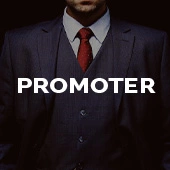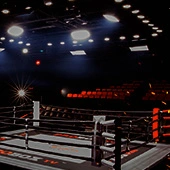By Thomas Hauser
Al Haymon has said that one of the factors that motivated him to get involved with boxing was the less-than-satisfactory experience that his brother, Bobby Haymon, had as a fighter.
Bobby Haymon lived in Cleveland and fought for most of his career as a welterweight. He turned pro on March 31, 1969, with a fourth-round knockout of Sam Ivory (whose record was 1-17-1).
Don Elbaum was the promoter, matchmaker, or booking agent for 19 of Haymon’s 31 professional fights.
“Bobby could fight,” Elbaum says. “He wasn’t much of a puncher. But he was a good boxer and he had a good chin. His manager, a guy named Dominick Polo, was also his trainer. Polo brought him to me, and I thought Bobby was a prospect. I promoted his fight against Sam Ivory. Then Dominick took him to the Washington DC area for three fights, which wasn’t too smart because Bobby lost two of them and got a draw in the third.”
Haymon returned to Elbaum for his fifth pro outing, a four-round decision over 1-and-9 Joey Blair. Then Polo took him back to Washington DC, where he lost again.
“Dominick was overmatching Bobby,” Elbaum says. “Bobby wasn’t ready for that level of competition. Finally, after three losses, Dominick realized it wasn’t working and put the choice of opponents in my hands.”
Under Elbaum’s guidance, Haymon won ten consecutive fights during an eighteen-month stretch, most of them against sub-500 competition.
“He was a good main event fighter for a club show and a good undercard fighter for a bigger show,” Elbaum recalls. “He wasn’t a runner. He made good fights. And he was a nice guy. He had a pleasant personality. I liked him.”
Then, on May 26, 1971, Elbaum matched Haymon against 11-6-3 Ralph Correa.
“Correa was a good tough club fighter, that’s all,” Elbaum remembers. “Before that fight, I thought that Bobby had a chance to become a legitimate contender. But Correa kept the pressure on all night, started nailing him, wore him down, and Bobby folded. I hadn’t expected that. When Bobby lost that one, I realized he wasn’t going to go as far as I thought he would.”
After losing to Correa, Haymon took nine months off from boxing. Then Elbaum brought him back for a sixth-round knockout of Jesus Alicia (who had 8 wins in 31 fights). Hall of Fame matchmaker Bruce Trampler picks up the narrative from there.
“I saw a few of Haymon’s early fights because I was in college at Ohio University and went to as many fights as I could,” Trampler recounts. “I was at the Joey Blair fight, and Bobby’s wins over Gene Masters [1969] and Al Bashir [1970]. I also saw the Ralph Correa fight, althought that was after I graduated from college and moved to Miami to work with Chris and Angelo Dundee. It was on the undercard of Floyd Patterson against Terry Daniels. Haymon got massacred. Correa brutalized him.”
In late-1972, Trampler moved back to Ohio.
“That’s when I actually met Bobby,” Bruce recalls. “He trained at the Olympic Gym on East 55th Street in Cleveland. Dominick was a disciplinarian where training was concerned. He emphasized conditioning and a fighter knowing how to work on the inside. Bobby was a competent boxer, a good technical fighter. But my strongest impressions of him were as a person. I think he was a mail carrier back then. And he was a nice guy. Bright, quiet, easy-going, always friendly with a big smile.”
Trampler was the matchmaker for three of Haymon’s 1972 fights: ten-round decisions over Sammy Rookard and Hector Perez, and a fourth-round disqualification victory over Terry Hayward.
“I also promoted the Hayward fight,” Bruce recalls. “Al Haymon was at that one. It was the first time I met him. Al came by the Top Rank office a few years ago. I took out my scrapbook with some clips from that fight, and we talked about what we remembered from it.”
In mid-1973, Trampler suggested to Russell Peltz that he match Haymon against William Watson (a young prospect from Philadelphia) on an August 31, 1973, card that Peltz was promoting at The Spectrum.
“I thought Watson would win easily,” Peltz recalls. “He was doing well at the time. It was scheduled for ten rounds, and it was a terrific fight. Watson got cut pretty badly in the first round, but he knocked Haymon down twice in the second.”
“From that point on,” Russell continues, “Watson was pretty much in control, but Haymon made a fight of it. Then, in the sixth round, Haymon tripped over Watson’s leg, fell out of the ring, and hit his head on the press table. He was hurt badly enough that they carried him from the ring on a stretcher. Since it wasn’t a punch that knocked him out, the fight was called a no contest.”
“I don’t think Elbaum and Dominick Polo were getting along so well at the time,” Peltz adds. “There’s a story that Polo hired someone put a bomb under the hood of Elbaum’s car.”
“Not true,” Elbaum responds. “It was under the bottom of my car, not the hood. And it wasn’t Polo. What happened was, there was a hitman named Danny Green, who killed a lot of people. They made a movie about him. You can look him up on Wikipedia. He exploded something like thirty-five bombs in cars before some people killed him the same way. Anyway, someone offered Danny five thousand dollars to kill me. But Danny had come to some of my fights and we’d had drinks together. So he said he wouldn’t kill me for five thousand dollars but he’d warn me for free. I had a Cadillac, and Danny blew it up with dynamite. Fortunately, I wasn’t in the car at the time. I knew some wise guys and spent a couple of weeks trying to find out who was behind it. Finally, someone told me who it was and said, ‘It’s over. You do nothing.’ The guy who hired Danny is still alive. I won’t tell you who it is because I don’t want to piss him off.”
Elbaum was also feuding at the time with Dean Chance (who’d won the Cy Young Award as the best pitcher in baseball in 1964 and promoted one of Haymon’s 1973 fights). Elbaum challenged Chance, who towered over him, to a fist fight.
“I won’t fight you,” Chance countered. “But I’ll throw baseballs at sixty feet.”
Meanwhile, Peltz wanted to promote a rematch between Haymon and William Watson, but Haymon retired instead. Four years later, he returned to the ring with knockout victories over three opponents who finished their careers with a composite record of 16 wins in 94 bouts. That set up Haymon’s final fight, a knockout defeat at the hands of Sugar Ray Leonard at the Capitol Centre in Landover, Maryland, on April 13, 1978.
“I was the one who got him the Leonard fight,” Trampler recalls. “I was friendly with Mike Trainer (Leonard’s attorney) and suggested opponents from time to time. On that one, I put Bobby’s name in through Eddie Hrica, who was a matchmaker in Baltimore, and Hrica passed it on to Trainer. Obviously, Bobby was the underdog. But it was a payday for him, and it was only Ray’s tenth pro fight.”
Leonard-Haymon was contested before 15,272 fans, breaking the record for an indoor fight in Maryland set two years earlier by Muhammad Ali versus Jimmy Young. Leonard knocked Haymon down one minute fifty-five seconds into round three. Then, simultaneously with the bell ending the round, he stunned Bobby with a hard right and followed up with a left hook that left Haymon draped over the ropes. Television replays clearly showed that the final punch was thrown after the bell.
Haymon’s handlers dragged him to his corner. He was unable to come out for the fourth round. Dominick Polo later complained, “I talked to the officials, and they said they couldn't do anything about it. That's because they had fifteen thousand people here, and they didn't have the guts to do anything about it."
An Associated Press article the following day was headlined “Tainted Victory for Sugar Ray.” A fight report in The Afro-American noted, “Leonard finished him off at the end of the round – and shortly after it.”
“Most likely, Bobby would have been knocked out anyway,” Trampler notes. “That last punch saved him from taking worse punishment later in the fight.”
Leonard-Haymon was Bobby Haymon’s final fight. He retired as an active fighter with a ring record of 21 wins, 8 losses, 1 draw, 1 no contest, 9 knockouts, and 2 KOs by. His brother, Al, is carrying the Haymon banner today. That’s more of a legacy than most fighters have.
Thomas Hauser can be reached by email at thauser@rcn.com . His most recent book - Thomas Hauser on Boxing - was published by the University of Arkansas Press.


